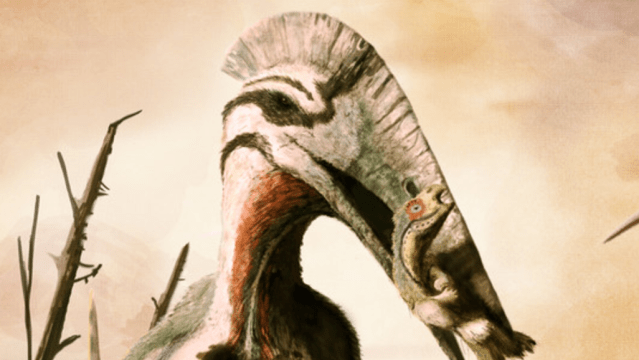It’s been said that the pterosaur, which can only be described as a bird-reptile-dinosaur-esque-thing, was the largest flying animal. This giant beast — which roamed the Earth during the Cretaceous period roughly 66.5 million years ago — was a reptile but not actually a dinosaur. Despite being winged, it wasn’t bird, either. The pterosaur basically looked like a platypus on bath salts.
Image: Wikimedia Commons
For obvious reasons, scientists have had a difficult time figuring how to classify the pterosaur. While pterosaur bones have been found many times before, a lack of firm evidence has kept the hideous beast’s lineage shrouded in mystery. But recently, two researchers from the UK found a remarkable pair of azhdarchid pterosaur fossils in the Transylvania region of Romania that could bring palaeontologists one step closer to figuring this out.
In their study, published in the journal Peer-J, Darren Naish and Mark P. Witton describe how the pterosaur fossils they found — from a creature they nicknamed Hatzegopteryx — diverge from our “conventional” understanding of pterosaur proportions. Typically, azharchid pterosaurs, the largest of the pterosaurs, are thought to have had unusually long necks, which they presumably craned down to reach for fish.
But Hatzegopteryx was a stone cold killer. Its wide bones and short, stocky neck portray a dominant predator — not a ballerina bird-thing. Hatzegopteryx’s abnormally wide mouth probably helped it scoop up prey the size of small horses — or dinosaurs — with ease.
“This specimen is one of several hinting at greater disparity within Azhdarchidae than previously considered, but is the first to demonstrate such proportional differences within giant taxa,” the researchers wrote.
Hopefully, this new research will help palaeontologists understand how to classify these bizarre creatures, and develop a better appreciation for the diverse lifestyles of pterosaurs. “The concept of short necked azhdarchids is yet to be explored in detail, despite the significance it has for our understanding of azhdarchid palaeoecology and disparity,” the researchers wrote.
At the very least, the new fossil find gives us one more reason to be happy humans weren’t around in the nightmarish world of the late Cretaceous.
[Peer]
